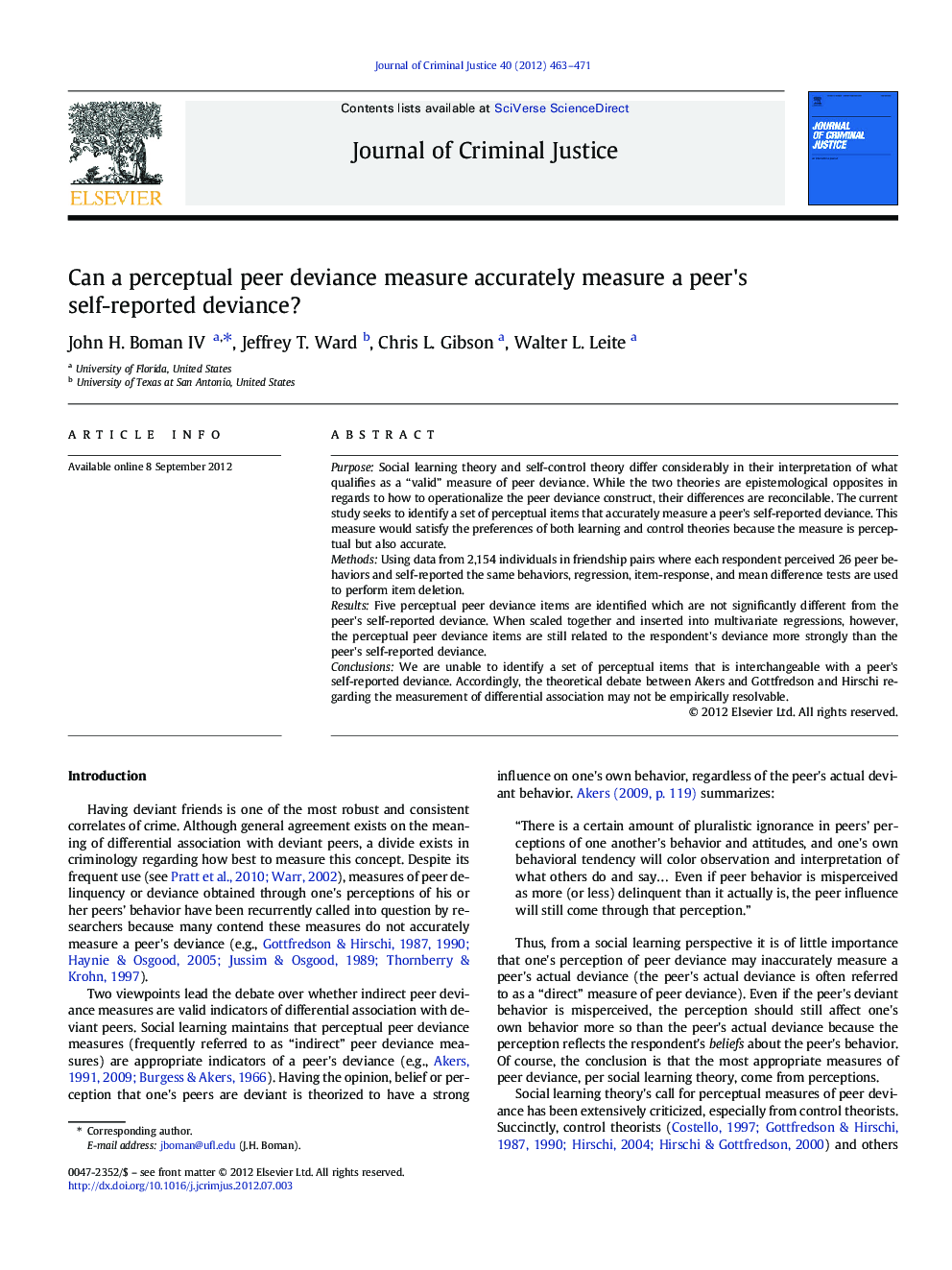| Article ID | Journal | Published Year | Pages | File Type |
|---|---|---|---|---|
| 882794 | Journal of Criminal Justice | 2012 | 9 Pages |
PurposeSocial learning theory and self-control theory differ considerably in their interpretation of what qualifies as a “valid” measure of peer deviance. While the two theories are epistemological opposites in regards to how to operationalize the peer deviance construct, their differences are reconcilable. The current study seeks to identify a set of perceptual items that accurately measure a peer's self-reported deviance. This measure would satisfy the preferences of both learning and control theories because the measure is perceptual but also accurate.MethodsUsing data from 2,154 individuals in friendship pairs where each respondent perceived 26 peer behaviors and self-reported the same behaviors, regression, item-response, and mean difference tests are used to perform item deletion.ResultsFive perceptual peer deviance items are identified which are not significantly different from the peer's self-reported deviance. When scaled together and inserted into multivariate regressions, however, the perceptual peer deviance items are still related to the respondent's deviance more strongly than the peer's self-reported deviance.ConclusionsWe are unable to identify a set of perceptual items that is interchangeable with a peer's self-reported deviance. Accordingly, the theoretical debate between Akers and Gottfredson and Hirschi regarding the measurement of differential association may not be empirically resolvable.
► Goal: Find measure of perceptual peer delinquency equal to peer's self-reports. ► Using dataset of 2,154 individuals nested within 1,077 dyads. ► 26 perceptual and peer self-reported delinquency measures are compared. ► Using several statistical procedures, no equal measure is found. ► Differences in opinion b/t Akers and Gottfredson & Hirschi may not be resolvable.
